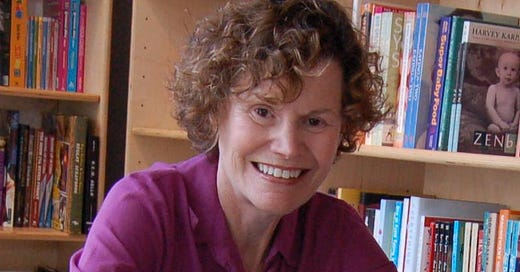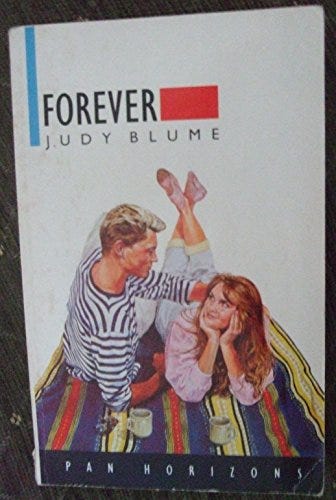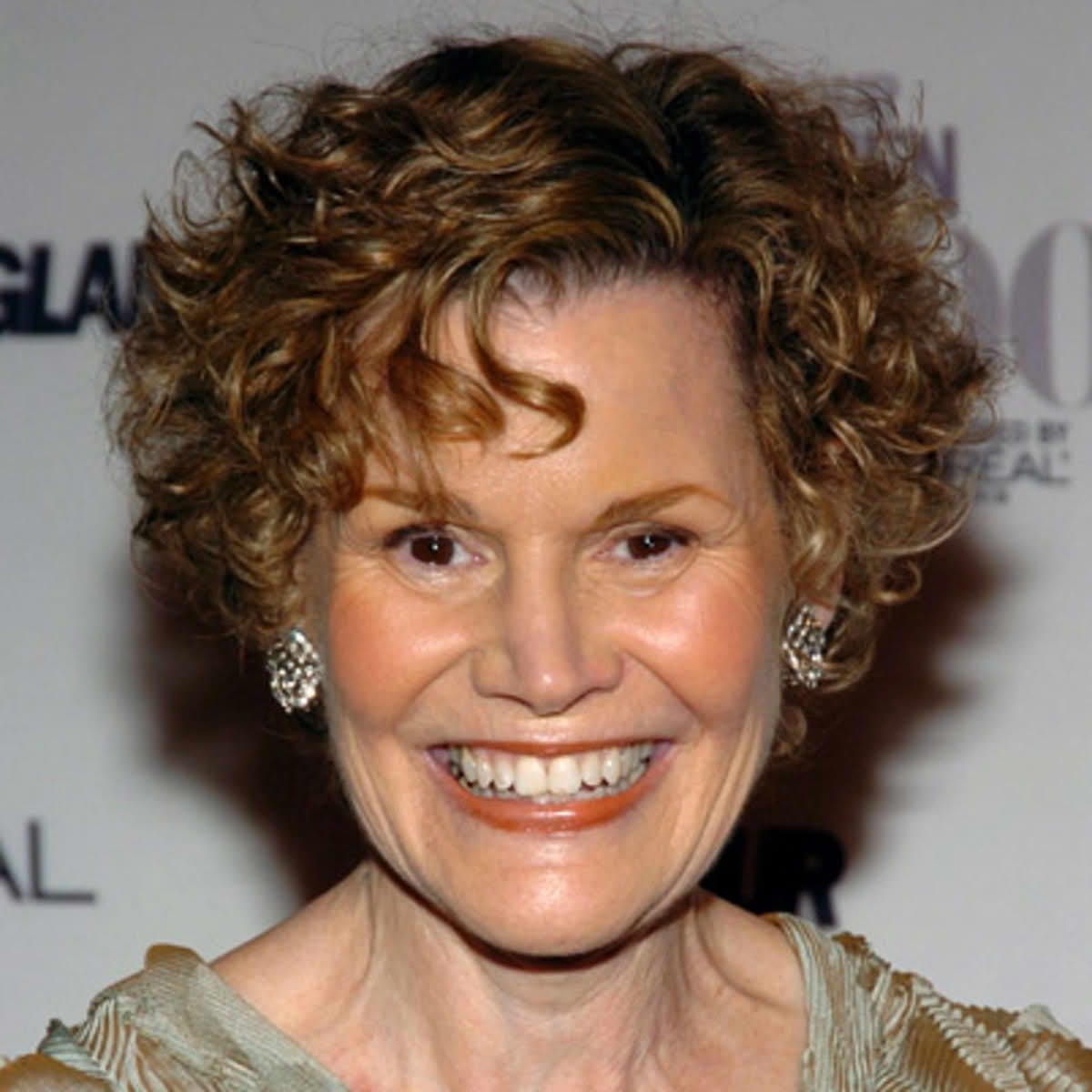Welcome to A Narrative of Their Own, where I discuss the work of 20th century women writers and their relevance to contemporary culture.
If you enjoy reading essays on literature, as well as reviews of great books and recommended reading, please consider a free or paid subscription.
This is an essay I have wanted to write since I started this newsletter almost three years ago…and yet, I have hesitated. I think simply because Judy Blume has always been such an inspiration to me, as for many young girls, since my early adolescence.
Noticing that the 2023 film version of one of her most well-known books, Are You There God? It’s Me, Margaret, has finally arrived on Netflix in the UK, gave me the impetus to tackle a likely insufficiently thorough enough look at the woman who inspired many a teenage girl of the 1970s, 80s, and beyond, to talk about periods, bra sizes and boys…
Born Judy Sussman in Elizabeth, New Jersey, on February 12th,1938, Judy Blume is best known for creating children’s and young adult fiction novels featuring people and situations relatable to young readers. The frankness of her first-person stories, and her ability to portray the concerns of her young audience with a sense of humour and a sprinkling of deep empathy resonated with millions of young adolescents around the world.
After graduating from high school with high honours, Blume attended New York University, obtaining a bachelor’s degree in education in 1960. In 1959, she married her first husband, John Blume, with whom she had two children, Lawrence and Randy.
As a young mother, Blume studied on a continuing education course on writing for children and teenagers, where she produced a draft of what became her first published book, The One in the Middle Is the Green Kangaroo (1969). She also published what would become her novel Iggie’s House for Trailblazer magazine, rewriting this for a full-length novel in 1970.
The book is told from the perspective of Winnie, whose best friend Iggie just moved away. She’s bored without her and is determined to befriend the new neighbours who move into Iggie’s house. However, she soon discovers that some of the neighbours in her white neighbourhood don’t want the new family, the Garbers, on their suburban street. The Garbers are Black, and the book explores racist attitudes, with some of the neighbours proposing a petition to get the family out of the neighbourhood.
The book was significant for a first novel for young readers and its tackling of racist attitudes in 1970’s suburban America. This first novel set the stage for what was to become Blume’s battle with book bans and the insistence of controlling the kinds of literature available for young people.
Probably Blume’s most well-known, coming-of-age novel appeared in 1970, Are You There God? It’s Me, Margaret, which features a preteen, eleven-year-old girl, Margaret Simon, whose family has moved to a new town. To complicate matters for Margaret, she has a Christian mother and a Jewish father, and struggles to understand her developing body as well as her relationship with religion. She speaks directly to God about these uncertainties, including topics such as getting her first period, when she will eventually need a bra, how she feels about boys, and where she fits in among her new classmates. She also questions where she sits within her family’s religious communities and with God in general.
Blume willingly tackled the sensitive topics of puberty and religion in a way which was sensitive and understanding to her young audience. She was also honest with them, something that wasn’t usual in the often moral tales told to children- particularly young girls.
"We must, we must, we must increase our bust!" - The chant of Margaret and her friends’ club, the “Pre-Teen Sensations.”
Although she began to receive letters from her young readers, letting her know how much they identified with Margaret Simon, she also received criticism from some parents and other adults, who deemed the book inappropriate, requesting its removal from the library shelves. They appeared to be mostly unhappy about its open discussion of menstruation, the physical development of young girls, and its religious discourse.
Blume was not deterred: she continued to write books tackling the issues pertaining to young people and adolescents throughout her career. Published in 1971, Then Again, Maybe I Won’t covers puberty from the male perspective, whilst It’s Not the End of the World (1972) examines the effects of divorce from Karen’s perspective, a young girl who just wants her parents to get back together.
In Deenie, the title character whose scoliosis impinges on her mother’s dreams for her daughter’s modelling career, addresses masturbation and even aroused the attention of members of the far right.
Her books for slightly older adolescents include Tiger Eyes (1981) which became a 2012 film, and which tells the story of fifteen-year-old Davey and her family as they struggle to come to terms with the unexpected death of her father, and Forever (1975), a controversial story about unmarried teenagers Katherine and Michael who experience love and sex for the first time. As with all her narratives, Blume addressed the topic of teenage sex in a relatable way that spoke to readers of the importance of responsibility; in the book, Katherine visits a clinic and is given a prescription for birth control pills. Importantly, the book remains honest and nonjudgmental. Unfortunately, such transparency and discussion of teenage sex, birth control and disobedience of parents made it her most banned book.
Blume also wrote books for younger readers, including the phenomenal Fudge series, beginning with Tales of a Fourth Grade Nothing (1972), which feature the Hatcher family, with Peter as the the long-suffering eldest sibling, with an annoying little brother, Fudge. Although these obviously contain less controversial themes, similar to her books for older readers, they contain language, situations, and concerns that affect children of this age, such as sibling rivalry, bullying, moving away from friends and the mystery of parents. Her first-person narrative allows her to capture her readers and relate to them in a way not many other writers’ could.
As well as the film of Margaret appearing in 2023, Blume’s controversial teen novel Forever has just arrived as a series on Netflix (USA), and has been heralded as a modern Black teen show. Nadira Goffe, writing in Slate states that as a young, Black teenager, she didn’t read Blume’s books, feeling that like much of the cultural canon, there wasn’t much there for her. However, in this new series, adapted by Mara Brock Akil (the creator of the popular Black sitcoms Girlfriends and The Game) she takes Blume’s story of a young teenage couple’s first forays into a sexual relationship to a new audience, now set in 2017 Los Angeles. As Goffe points out, Forever is one of Blume’s most censored books, appearing as no 7 on a list of The 100 Most Frequently Challenged Books in the 1990s.
Blume has gone on to write twenty six novels, including a handful for adults.
Wifey, a 1978 novel which explored the story of a woman who trades in her conventional wifely duties for her wildest fantasies, Smart Women (1983), Summer Sisters (1998), and In the Unlikely Event (2015).
In 1986, she collected the letters she had received over the years from young readers for the book Letters to Judy: What Your Kids Wish They Could Tell You. Proceeds from the book and select others went to the Kids Fund, which she established in 1981 to offer support to nonprofit organisations that support better communication between parents and children.
Finding her works the focus of book-banning campaigns in the 1980s, Blume became a staunch advocate for intellectual freedom as well as becoming a board member with the National Coalition Against Censorship (NCAC). In Places I Never Meant to Be (2001), she generously invited other young adult writers whose work had been censored or challenged to contribute original stories to benefit the NCAC.
There is no doubt that Blume has had a huge influence on literature for young adults. After film-makers lobbied her for several years to participate in a movie about her life, she finally consented to a documentary telling her story. What we see in the 2023 Judy Blume Forever is the story of a woman who led from a progressive place of authenticity as the world she knew began to shift around second wave feminism.
Her books for children and young adults are free from condescension; from the typically found morality tales of earlier writers, where the girls are all “good” and the “boys will be boys” and get to have all the adventures. What comes through in a Judy Blume novel is her utter respect for the audience she was writing for. “I was a good girl with a bad girl lurking inside,” Blume cheekily tells the camera in the documentary.
Though as a youth herself, born as she was to a conventional, middle-class Jewish family, she married her college sweetheart and started a family. She began to write when her children were young, without the approval of neighbours or even her first husband, who regarded her work with a somewhat patronising eye, and who she divorced in 1975.
Luckily, she persisted, creating over twenty novels for children and young people.
What illuminated the documentary for me were the pages that have been archived from Blume’s correspondence with her readers. Her fans wrote to her about their darkest fears, secrets, and dilemmas, trusting her completely to know their hearts. Remarkably, when Blume received a letter from a regular young pen pal, stating that her parents were in crisis and would not be attending her college graduation at Bryn Mawr, Blume showed up there herself. All this, for a girl she had never met in real life.
“I could be fearless in my writing in a way I couldn’t be in my life.”
Her ability to make her readers feel heard shine through her books, as does the way she transports herself into the mind of an adolescent. I have never encountered anyone before or since who has had this total knack of truly understanding her audience. Blume herself states that she managed this because she has retained a total recall for everything that happened to her after third grade.
Blume utilised her son in her Fudge series of books, and speaks in the documentary of her decision to leave her first husband at the age of 37. This influenced the writing of her book It’s Not the End of the World. She remarried, however this was short-lived and also ended in divorce, leaving Blume to swear off marriage altogether. Then she met George Cooper, a law professor. The couple now live in Key West and run an independent bookstore together (isn’t this just the dreamiest of happy endings worthy of the best book…?!).
Touchingly within the documentary, Blume opens up about her mothering regrets.
In 2024, Blume received the Ivan Sandrof Lifetime Achievement Award from the National Book Critics Circle. The organisation cited her as an author whose novels “inspired generations of young readers by tackling the emotional turbulence of girlhood and adolescence with authenticity, candour, and courage,” and as “a relentless opponent of censorship and an iconic champion of literary freedom.”
As I began with this essay, I said that I was hesitant to start writing, as Judy Blume’s books have been such a backbone to my life.
As an adolescent, I came to her young adult fiction, first with Margaret, then with Then Again, Maybe I Won’t, It’s Not the End of the World, and probably my favourite, Deenie. Within these books, I found that I was no longer alone with my fears and dreams of life as a teenager, trying to figure out life, love, and why I felt like such a weirdo.
Later, I went on to the older teenage novels, finding that, contrary to what I had seen as the accepted rhetoric, growing into a confident young woman, having boyfriends, relationships and adventures, did not make you morally bankrupt. It just made you normal.
Later still, I had the blessed pleasure of sharing my favourite author with my own children. Despite being in the 2000s, they translated remarkably well. Who doesn’t understand the sibling dynamics of the Fudge series, with the annoying yet endearing little brother who always causes chaos, and the sensible, older brother Peter, who ambles along, trying to muddle through his growing pains? Moreover, a teenage daughter, I found, still needs to know that they are not weird, and that somebody understands them.
I remember coming to Blume’s novel for adults, Summer Sisters, one hot summer when I was heavily pregnant with my first child, and finding that her tale of two best friends growing up was still a joy to discover.
In 2015, Blume did a book tour for her adult novel In the Unlikely Event, a fictionalised account of a real-life history of three separate plane crashes that took place in 1951 in her New Jersey town. I was lucky enough to attend one of her readings, and finally got to tell the remarkable writer how much I had loved her books. I had two of them signed for my own kids, to remember reading them together and all they had meant.
She was as wonderfully unassuming as you would imagine, chatting with her beloved husband George in the audience, who had accompanied her on tour and assisted her in the research for the book. Blume stated this would be her last novel: at the age of eighty-seven, I think she deserves to enjoy her Key West bookstore, knowing she has touched the lives of so many young people.
If you’re new around here, I usually write about all things women literature related. Please consider a free or paid subscription - your support helps keep this newsletter afloat!










This post is a wonderful tribute to a writer who obviously meant a huge amount to you, but also more generally it’s a great explanation of why fiction matters and what literature can do. I wish I’d had Blume in my adolescence - my rather conventional mother kept a strict eye on what I read and it was all good girls and ponies until I discovered Charlotte Brontë!
The children's and YA writing market of today, and the authors in those genres, are in considerable debt to her for increasing the narrative potential within them.